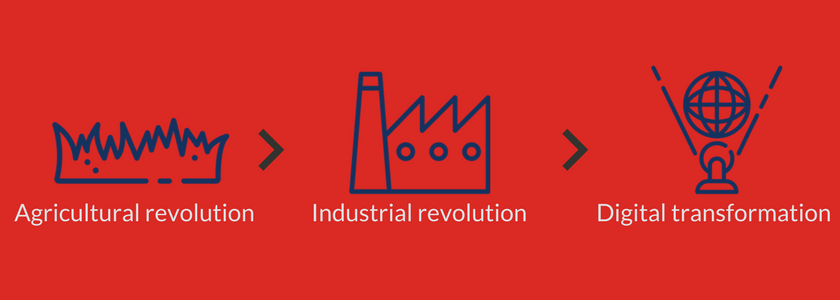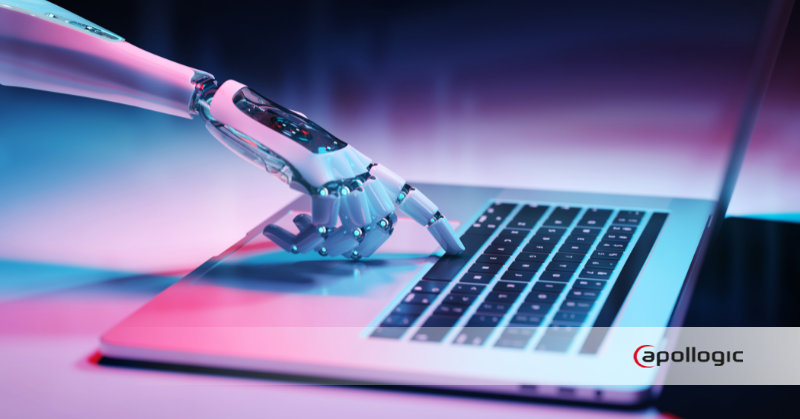How to lead Digital Transformation?

Sylwia Zabłocka, Marketing specialist
- 28th February 2019
- Trends in SAP
- 3 min

The slogan “Digital Transformation” appears everywhere.
What is it? How can I implement it? Where to start? Isn’t it just an empty buzzword? When did this phenomenon start and does it have an end date?
What is Digital Transformation?
The term “Digital Transformation” is often limited to the changes in used technologies and implementing the most innovative solutions. However, this phenomenon assumes also a shift in people’s mindset to the ways of performing tasks in an organization.
Digital Transformation is the third step after the two previous revolutions – agricultural and industrial. They were both substantial civilizational leaps. The first wave included the transformation of society from collectors to farmers, hunters and breeders. The industrial revolution has changed the way goods are produced and consumed by basing the economy on coal.
What are the changes we are facing today?

Digital Transformation is a phenomenon associated with terms such as the “scientific-technical revolution” and the “third industrial revolution”. This process has begun in the 1950s and is continuing to this day. Estimated date of its peak phase is 2025.
It is easy to see the progress made in civilization since 1950. From computers occupying the whole rooms, we have moved into the era of domestic appliances connected to the Internet, artificial intelligence and alarmingly natural robots by Boston Mechanics.
How does business react to these changes?
First of all, it seems extremely important to look for new technologies and their practical applicability continually. Continuous asking questions: “how?”, “why” and “how can the implementation of the latest solutions improve my company’s performance?”.
Second of all, education – not only of experts at the highest levels but also a change in the mindset of employees and their attitude towards the proposed changes. Developing their technical skills, which turn out to be necessary for an increasing number of jobs, even those traditionally not associated with technology.
It is worth realizing that this revolution, taking place in front of our eyes, presupposes placing the customer at the center of attention.
This issue connects to the ongoing monitoring and collecting data regarding consumers’ needs, attitudes, and even predicting their behaviors. One of the ways to facilitate this process is to use predictive analysis. They enable the automation of these processes, continuously received feedback and even real-time conclusions.
Are all companies technology companies?
Every company is now a technology company.
Gary Shapiro, CEO of Consumer Electronics Association
Probably not yet. Probably smaller businesses still have a long way to go towards digitization. However, the overall perspective already seems to be diametrically different. Just look at the labor market – FMCG or fashion companies are looking for developers. For a long time now, the structures of many organizations will include people handling the latest technologies.
At the moment, it is not only large corporations that are opening Research & Development departments.
How to lead changes in the era of Digital Transformation?
When the digital transformation is done right, it’s like a caterpillar turning into a butterfly, but when done wrong, all you have is a really fast caterpillar.
George Westerman, MIT Sloan Initiative on the Digital Economy
According to forecasts, it is those companies which will become digital enterprises that will become the business leaders of change. That is why it is so important to monitor what is going on in the technological market continually. And from solution to choose, it abounds with on the market.
They speed up and streamline orders, automate customer service or even change the approach to fundamental issues such as storing and processing data.
The recent widespread saying that digital transformation is a road rather than a goal confirms the dynamic nature of these changes. It is worth to be aware of their liquid nature. What seemed innovative yesterday may be replaced tomorrow by a more efficient and innovative solution.
Digital Transformation with SAP solutions
There is no way to take shortcuts in the path to the Digital Transformation. However, some solutions can support this process well now and are available for implementation for many companies.
One of them is SAP Leonardo, a comprehensive innovation system. Its user can choose from many integrated technologies such as Machine Learning, Internet of Things, Blockchain or Big Data. The solution uses the SAP Cloud Platform – a cloud environment that allows for the agile development of business applications.
Unfortunately, there is no instruction for effective implementation of Digital Transformation in the company. Many enterprises succeeding in it are continually testing new solutions and taking risks. Therefore, it is worth to keep an eye on market changes.
Trends in business software for 2018
- On 28/02/2018







0 Comments